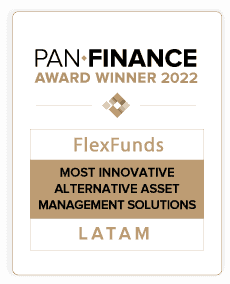- This article outlines the new technologies and strategies investment management firms should adopt to adapt to a lower-interest-rate environment by 2025.
- It is aimed at asset managers and investment advisors seeking to remain competitive in the markets.
- At FlexFunds, we offer asset securitization solutions to issue exchange-traded products (ETPs) that enhance the distribution of investment strategies. For more information, feel free to contact our expert team.
As we approach the end of the year and head into 2025, investment management firms must recalibrate their strategies to adapt to the evolving global macroeconomic environment, characterized by controlled inflation and declining interest rates.
In the United States—the world’s largest economy, which significantly influences global markets—year-over-year inflation dropped from 8.2% in September 2022 to 2.4% in September 2024.
Much of this decline resulted from the Federal Reserve’s tight monetary policy, which raised interest rates from near 0% to a range of 5.25–5.50%.
However, with inflation approaching the 2% annual target, interest rates have started to decrease and are expected to continue declining. According to the Federal Reserve’s Summary of Economic Projections (SEP), the benchmark interest rate is anticipated to fall to a range of 3.25–3.50% by the end of next year.
Given this context and other factors extending beyond economic boundaries, investment management firms will need to focus on three key areas to maintain their market leadership:
International diversification
With the Federal Reserve lowering interest rates, U.S. Treasury bonds—widely considered the “safest assets in the world”—will yield lower returns.
Although other regions, such as the European Central Bank, are likely to follow this path of monetary easing, many emerging markets will continue offering higher returns.
To enhance portfolio returns, investment management firms should consider transitioning to public and private bonds or other assets, including equities, from higher-risk countries.
“Lower U.S. interest rates typically encourage capital flows to higher-yielding assets, such as those in EMs. Stronger economic growth in EMs also attracts capital inflows, as investors seek capital appreciation on top of greater interest rate returns,” noted experts at S&P Global.
Adoption of new technologies in investment management
The investment management industry must also leverage emerging technologies to boost its competitiveness and efficiency. Three technologies stand out in this regard:
Artificial intelligence
According to Beaumont Capital Markets, artificial intelligence (AI) and machine-learning algorithms are revolutionizing investment management by enhancing decision-making processes. AI enables predictive analytics to forecast market trends and automate strategies for optimizing performance.
Blockchain and cryptocurrencies
Blockchain technology improves transaction security through decentralized ledgers. It also facilitates the emergence of cryptocurrencies, which are regarded as alternative assets that can help enhance portfolio returns.
Cloud computing
Cloud computing infrastructure enables asset management operations to scale effectively. By migrating to cloud platforms, executives gain access to powerful computational resources and data storage, allowing them to process and analyze large datasets quickly.
Cost optimization in investment management
Lastly, cost optimization is becoming an increasingly crucial pillar for investment management firms to remain competitive and retain market share.
By reducing their cost structure, firms can lower the fees charged to clients without sacrificing profit margins, enabling them to attract and retain a broader client base.
A study by Kuvera revealed that an additional 1.5% annual fee can compound to 35% over 20 years, significantly impacting wealth creation.
To achieve cost optimization, investment management executives should explore cost-efficient alternatives, such as the exchange-traded products (ETPs) offered by FlexFunds.
Thanks to its asset securitization process and partnerships with leading providers, FlexFunds transforms portfolios of liquid or illiquid assets into bankable assets with their own ISIN/CUSIP codes, enhancing the distribution of investment strategies.
For more information about FlexFunds’ ETPs and asset securitization services, feel free to contact our expert team. We’ll be happy to assist!
Sources:
https://www.conference-board.org/brief/global-economy/fomc-analysis-sept-2024
https://www.spglobal.com/ratings/en/research/articles/240924-economic-outlook-emerging-markets-q4-2024-lower-interest-rates-help-as-pockets-of-risk-rise-13259516
https://beaumont-capitalmarkets.co.uk/technological-innovations-in-asset-management/
https://kuvera.in/blog/25162-2/







